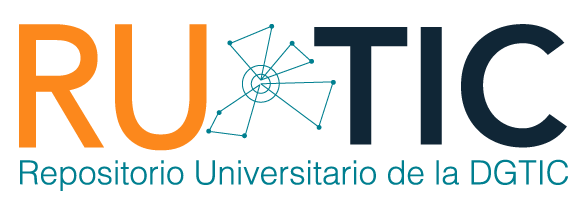| dc.coverage.spatial | MX | |
| dc.date.accessioned | 2018-06-28T04:46:12Z | |
| dc.date.available | 2018-06-28T04:46:12Z | |
| dc.date.issued | 2008-05-10 | |
| dc.identifier.uri | https://ru.tic.unam.mx/handle/123456789/1379 | |
| dc.description | Trayectos | |
| dc.description.abstract | El trabajo intenta identificar y especificar qué estrategias de aprendizaje se relacionan con determinados estilos de conocimiento, así como definir cuáles son las más favorables para la utilización de determinados métodos. Para ello se contemplarán diferentes procesamientos, en función de los hemisferios cerebrales, se considerarán además, algunas variables que podrían marcar diferencias, como son sexo, facultad, año cursado de la carrera, procedencia y tiempo dedicado al estudio. Se tomará en cuenta, además cómo se relacionan estas variables con el rendimiento académico | es_MX |
| dc.description.abstract | The work tries to identify and to specify what learning strategies they are related with certain learning styles and, to define the styles that are more favourable to the use of certain strategies, contemplating different prosecutions in function of the cerebral hemispheres and considering some variables that could be marking differences, like they are sex, ability, year of having studied of the career, origin, time dedicated to the study and year of having studied of the elected career. It is also considered how they are related these variables with the academic yield. The field study was carried out with 147 students of the National University of Río Cuarto, Argentina and two instruments were used: ILP - R and ACRA. The analyses showed: a) there would not be relationship among certain type of prosecution of the information according to our cerebral hemispheres and the academic yield of the students; b) the elaboration strategies are used so much in a style hemispheric right or left and, c) a deep evident style can be carried out low a bias hemispheric right or hemispheric left, as likewise linking between a style elaborative and a style hemispheric right and between a repetitive style and a hemispheric left style. They offer some considerations and proposals according to the results | en |
| dc.format | html | |
| dc.format | application/pdf | |
| dc.format.extent | 14.56 KB | |
| dc.format.extent | 135,81 KB | |
| dc.language | spa | |
| dc.publisher | Universidad Nacional Autónoma de México. Dirección General de Cómputo y de Tecnologías de Información y Comunicación. Revista Digital Universitaria | |
| dc.relation.isformatof | http://www.revista.unam.mx/vol.9/num5/art27/art27.pdf | |
| dc.relation.ispartof | http://www.revista.unam.mx/index_may08.htm | |
| dc.rights | openAccess | |
| dc.source | Revista Digital Universitaria (1607 - 6079). Vol.9, No.5 (2008) | |
| dc.subject | Estrategias de aprendizaje | |
| dc.subject | Dominancia cerebral | |
| dc.title | Estilos y estrategias de aprendizaje… | es_MX |
| dc.type | article | en |
| dc.subject.keywords | Hemisferios cerebrales, Proceso cerebral del aprendizaje, Strategies of learning, Brain dominance, Brain hemispheres, Brain learning process | |
| dc.identifier.url | http://www.revista.unam.mx/vol.9/num5/art27/int27.htm | |
| dc.creator | María Laura de la Barrera | |
| dc.rights.url | http://creativecommons.org/licenses/by-nc-sa/4.0 |
Files in this item
This item appears in the following Collection(s)
COMPARTE
BÚSQUEDA
Escriba el texto a buscar en DSpace
CONTACTO
El Repositorio Universitario de la DGTIC se edita en la Dirección General de Cómputo y
de Tecnologías de Información y Comunicación (DGTIC), de la Universidad Nacional Autónoma de México (UNAM)
Circuito Exterior s/n, Ciudad Universitaria, Coyoacán, C.P. 04510, México, D.F
Tel: +(52) (55) 56228166 Email: rutic@unam.mx









 ¿Qué es un repositorio...?
¿Qué es un repositorio...? ¿Qué beneficios obtengo...?
¿Qué beneficios obtengo...? ¿Qué tipo de recursos...?
¿Qué tipo de recursos...? Preguntas frecuentes
Preguntas frecuentes